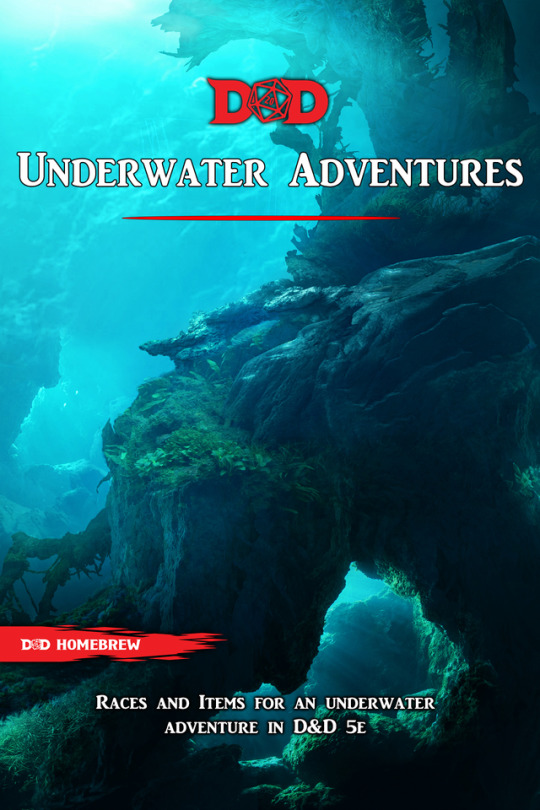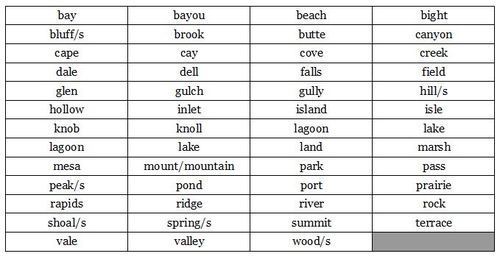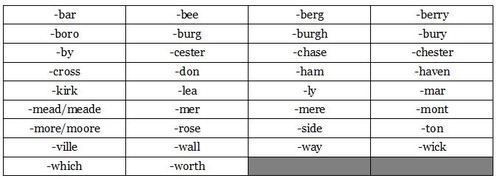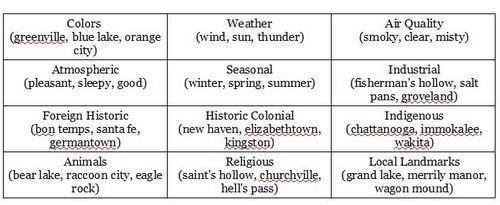My side blog dedicated to my love of DnD. main Blog @Squidking01.
Don't wanna be here? Send us removal request.
Photo

DM on Twitter or email [email protected]
You can donate via KO-FI for sketches/support
I work via Paypal invoices, payment first, money sent outside of invoices are considered donation
75 notes
·
View notes
Photo

It’s been a lot of work, but the Underwater Adventure PDF is finished! It includes five races, some magic items, a couple additional rules and variants, and reworks of underwater animals! This PDF was made as a ‘Thank you!’ for supporting my project to bring D&D to local libraries.
Download it, or use it online through Dropbox
Reblogs are greatly appreciated!
7K notes
·
View notes
Note
Hey homeskillet. I need advice on how to run a early level adventure on the cult of Nerull. Any advice
The cult of Nerull is apparently very solitary and cloistered and consist of people that abhor life and/or delight in murder. I would figure out what your specific cult wants with the god of death, darkness, murder, and the underworld. Most people apparently avoid speaking his name to avoid getting his attention.
I would definitely have them work in secret. Their presence is more felt than known as people start disappearing. Cult members hide their true identity and convene under cover of darkness. I would run it like a mystery where disappearances and murders are slowly uncovered and their temple’s location found before the PCs raid or infiltrate it to end its evil.
For a lower-level adventure, I would assume that simple Bandits, Thugs, Cultists, and Cult Leader NPCs from the Monster Manual would work. Perhaps they have some sort of beast they feed their victims to so there is no evidence left behind from their murders. They likely have access to undead minions which are perfect fodder for adventurers to fight. If there’s a cleric in the party be sure to spread out the undead throughout a dungeon so the cleric needs to pick and choose the best time to Turn Undead (likely when faced with a large number).
The cult is very vague so I would definitely create some interesting characters (RP-wise and class/monster/ability-wise) to flesh it out. Another way to come up with encounter ideas is look through this list of monsters by CR and look around the PCs’ level, then pick a cool creature and then justify it in the dungeon.
13 notes
·
View notes
Text
GUIDE: NAMING A TOWN OR CITY
This post was originally from a FAQ, but since the original link is now defunct, I am re-posting it here.
There are many things to keep in mind when naming the town or city in your novel:
1) Genre/Theme/Tone
It’s very important to consider the genre and theme of your story when choosing a town name. Take these names for example, each of which indicates the genre or theme of the story: King’s Landing (sounds fantastical) Cloud City (sounds futuristic) Silent Hill (sounds scary) Sweet Valley (sounds happy and upbeat) Bikini Bottom (sounds funny) Radiator Springs (sounds car-related) Halloween Town (sounds Halloween-related) Storybrooke (sounds fairytale-related) 2) Time/Place It’s also important to consider the time and place where your story takes place. For example, you wouldn’t use “Vista Gulch” as a name for a town in Victorian England. You probably wouldn’t use it for a town in modern day North Carolina, either. Vista is a Spanish word and would normally be found in places where Spanish names are common, like Spain, Central and South America, the southwest United States (including southern California), Cuba, Puerto Rico, Dominican Republic, and Florida. 3) Size/Settlement Type An isolated town of 300 people probably won’t be Valley City, but a sprawling metropolis of 30 million could be called Windyville, because it could have started out as a small town and grew into a large city. 4) Geography Words like gulch, butte,and bayou tend to be regional terms. You probably wouldn’t find Berle’s Bayou in Idaho, or Windy Butte in Rhode Island. Words like mount, cape, and valley are dependent upon terrain. Most of the time, you won’t have a town named “mount” something unless there are hills or mountains nearby. You wouldn’t use “cape” unless the town was on a cape, which requires a large body of water. 5) History Is there a historical person or event that your town might be named after? The Simpsons’ hometown of Springfield is ironically named after its founder, Jebediah Springfield. Chattanooga, Tennessee is named after the Cherokee town that was there first. Nargothrond, in The Lord of the Rings, is an Elvish town with an Elvish name. 6) Combination of Words
person name + geographical term = Smithfield, Smith Creek
group name + geographical term = Pioneer Valley, Settlers’ Ridge
descriptive word + geographical term = Mystic Falls, Smoky Hill
person name + settlement type = Smithton, Claraville
landmark + settlement type = Bridgton, Beaconville
Word Lists
Types of Settlements

Geographical Features

Place Words

Common Suffixes

Other Descriptors

23K notes
·
View notes
Photo

Godsend- Weapon (glaive), Artifact (requires attunement)
This sword-spear was crafted by the gods, and used by a powerful warrior who could walk between worlds, to slay a monster that threatened to consumed all of Theros in madness. The original blade of the Godsend was made by Purphoros, the God of the Forge, in a clash with his brother Heliod, God of the Sun. Once known as the Blade of Chaos, Purphoros worked for unending days on the weapon, eventually infusing a small fraction of his own lifeblood into it- Nyx, the substance of the gods. In doing so, Purphoros made a blade capable of cutting through Nyx, damaging it beyond repair. In the chaos of Purphoros and Heliod’s battle, the sword fell to the earth below, and the planeswalker Elspeth grasped it in mid-flight, before vanishing into thin air. A decade later Elspeth would return, with the sword in tow, and Heliod named her as Champion of the Sun. Heliod reforged the blade into the Godsend, a powerful sword-spear with all the formidable cutting power of its predecessor, and sent Elspeth to destroy the massive hydra Polukranos, rout the minotaur hordes of the chaotic god Mogis, and end the life of the upstart deity Xenagos.
Magic Weapon. The Godsend is a magic weapon that grants a +3 bonus to attack and damage rolls made with it. In addition, attacks made with the Godsend deal an additional 1d10 radiant damage.
Random Properties. The Godsend has the following randomly determined properties:
2 major beneficial properties
1 major detrimental property
1 minor detrimental property
Blade of Nyx. You have advantage on attacks made with this weapon against celestials, fey, and fiends, and attacks made against these types of creatures deal an additional 2d10 force damage.
Cast Down. Creatures killed using the Godsend can’t be resurrected except through the use of the *wish* spell or other magic.
Champion’s Reach. Whenever you make an attack with the Godsend, you can choose to use it to make a ranged attack with a range of 60 feet. After doing so, the Godsend automatically returns to you at the start of your next turn. You must have a free hand to catch the Godsend, otherwise it falls to the ground at your feet.
Remembered Foe. You have advantage on attack rolls made with the Godsend if the target is the same as a creature you have previously killed with the Godsend. For instance, if you have killed an aboleth with the Godsend, you have advantage on all attack rolls made with the Godsend against all other aboleths.
Keep reading
495 notes
·
View notes
Text
our D&D characters had a pillow fight and it was. Amazing
26K notes
·
View notes
Note
This is from my main Blog. But thank you <3
Can i request a Dice pallet for my human Nobel pyromancer? His bame is Yevenex. "Ven" for short. He's a cocky Bitch for sure. But since he recently came back from the dead he's been searching for a way to become alive again. He's my favorite. I'd like to think his colors would be red and gold
Oooooooh fiiiiireee
Cocky Bitch™
I like this boy a lot

D6: Chessex- Gemini Red/Yellow
D8: HDDice- Milky Yellow
%: Wiz Dice- Dwarven Brandy
D20: Skull Splitter Dice- Antique Brass
D10: Dice Envy- Technomancer
D12: @darkelfdice - Glitter Dice Yellow
D4: Chessex- Frosted Red
25 notes
·
View notes
Text
Yevenex “Ven” Velen
The Dead Pyromancer
So I wanted to talk about my Dungeons and Dragons 2nd edition character.
1 note
·
View note
Text
D&D 5e Homebrew Magic Items Guide

Use this Table
When homebrewing your own magic items, it can be a hassle trying to find comparisons and determine its cost/rarity to balance it. This table gives you a bunch of useful information that is either spread throughout the DMG or was not gathered at all. It can help you create a fairly balanced item with an appropriate rarity.
Rarity. The rarity of the item.
CL. The caster level of spells cast by the item, also a good gauge for what level the players should find such an item.
Value (Average). Shows the item’s value based on rarity but also gives the average in parentheses.
Consumables Value. Half of the item’s average value; this is what it’s worth if the item can only be used once.
Max Spell Lvl. The highest level spell that can be cast or replicated by the item.
Max Wep. Bonus. The greatest flat numerical bonus to attack and damage rolls for an item. You can often substitute such bonuses for unique abilities, like having a Legendary item have only a +2 bonus but do a unique thing a Rare item could do.
Average Save DC. The average range of saving throw DCs for items of this rarity. You can bump this number up by 1-2 if the item is consumable; don’t want players to feel like they wasted it!
Charges (daily). If the item has charges, these are the average number of them that items of this rarity have. You can also use this as a gauge for how often you can use the item, bearing in mind that spells usually cost a number of charges equal to the spell’s level.
Item Uses
Here are tips on how to balance item recharges.
Recharge on Rest: Most items don’t recharge based on a character’s rest as items don’t take much out of the character, they just drain their own magic and need time to replenish it. The character’s exhaustion has no bearing on an item… unless it does. If the item exhausts the user, then you could make an argument for it to recharge on the user’s rest.
1-Hour Recharge: An item that recharges after an hour is fairly powerful; it ensures the player can use it whenever they truly need it. I would reserve this for lower-level spell equivalents or smite-like abilities that deal enhanced damage on one attack. Design these items like you might design a Channel Divinity ability.
Daily Recharge: An item that recharges after 8-24 hours is fairly restrictive. It should be designed to be a last-ditch item that players can pull out of their back pocket to deal with a big threat. Keep in mind that players will likely save such an item for a boss or important foe, so try to refrain from designing save-or-suck abilities unless it’s something a big bad would be immune to (like charm). If you don’t and then you give it to a player, they will just keep using the same item to get out of boss fights for free. Area effect abilities are useful as fewer classes have access to those so they will prove useful in a pinch. You can also design daily items to have powerful but unique effects; things you wouldn’t want players doing all the time but can prove useful. A Passwall spell or Control Water might be good candidates as they have niche applications but in those circumstances can prove overpowered.
Charges: An item’s ability should cost 1 charge per spell level of the ability. If its ability isn’t a spell, try to find a spell that’s similar to compare it to. Charges should recharge once a day, but sometimes don’t replenish all of them (usually it’s a dice calculation that can recharge fully if the maximum amount is rolled). Sometimes items require a special circumstance to replenish charges, like needing to be drenched in blood. You can be creative with this but ensure that a player could accommodate for this on an average adventure.
Other Tips
Add Interest. Add something to make the item unique. The rarer an item is, the more unusual features or abilities it has. Think about what the item might passively do, like shedding light, freezing water it touches, emitting a smell, or humming a tune. Perhaps the item has unique properties that are highly specialized, like allowing the wielder to speak Pterafolk, or allowing them to sense snakes, or turning objects blue.
Intuitive Design. Decorate the item so an adventurer could probably guess it’s use by looking at it, but don’t spell it out for them. If it has skulls it probably is evil, frightens, or deals necrotic damage. If it has fiery brass motifs, it probably does something with fire. You get the idea.
Command Words. If it has a command word, try to provide a way to discover it, whether it’s written on the item in an unusual language, or depicts someone/something that is the keyword, or is placed near the item (hopefully in the same room, but at least in the same dungeon). Players can always use an Identify spell to learn the command word if they can’t figure it out, so I don’t think it’s mean-spirited to not spoon-feed information to the players.
5K notes
·
View notes
Note
Hey, quick question. I'm having my party go into the sewers of this city to track down a rogue vampire whos on the run. Said vampire has an alliance with a local gang of Wererats. And im not sure what i want to have as underlings/anything cool with the gang. I've never really used them. Got any ideas?
I would play wererats as you would any rogue. They use theirability to turn into rats to sneak up on foes or escape clean. They take onhuman form when topside but are always grimy with shredded clothing, more likevagrants. You could say the vampire communicates with the wererats using theirChildren of the Night to send regular rats to them with messages.
In their lore, wererats don’t willingly transmit their curseunless they want they want the new wererat to join their gang. This makessense. Wererats are really just regular people but with ratpowers/personalities. Think of them as a gang of hoodlums. You could have thembear a common symbol representing their group (likely the vampire’s sigil). Givesome wererats distinct personalities that define them, using NPC traits orsomething.
Despite working for the vampire, they could also have takento thievery and have hordes of junk mixed with riches. Their lair should looklike a hoarder’s home, but with a few valuables that can be picked out.
Also, you could give them a 2d6 Sneak Attack if you want tomake them a bit deadlier. They do “prefer ambushes” in the lore but they don’treally have any added benefit for doing so. Adding it might make them seem morenuanced in how they prefer to fight.
46 notes
·
View notes
Photo

Devil’s Play (4th Level, Evocation)
Casting Time: 1 action
Range: Self
Components: S, M (a bottle of cooking oil)
Duration: Instantaneous
Classes: Sorcerer, Warlock
Like a devil, your hands are never idle. You splash the oil from the bottle and sparks from your fingertips ignite it, forcing each creature in a 10-foot radius surrounding you to make a Dexterity saving throw, taking 4d6 fire damage on a failed save, or half as much on a success. Creatures which fail the saving throw begin to burn, taking 2d6 fire damage at the start of each of their turns, until a creature uses its action to smother the flames.
Flashback. If you’ve already cast this spell since the end of your last long rest, you can instead choose to cast it as a Flashback spell using a spell slot of 8th-level or higher. If you do so, the initial damage increases to 10d6, and the flames on creatures that fail the saving throw can’t be smothered, causing them to burn for 1 minute. After doing so, you can’t cast this spell again until the end of your next long rest.
If you’d like to help support me to keep doing what I’m doing, as well as get some great benefits, check my page or the notes for the links to my Patreon and kofi pages.
91 notes
·
View notes
Text
Depths Domain

For those priests that worship deities of the oceanic abyss, the depths domain grants the cleric power over water, darkness, and the fear of the unknown.
Domain Spells
1st: armor of agathys, cause fear
3rd: darkness, hold person
5th: fear, wall of water
7th: control water, shadow of moil
9th: commune, maelstrom
Bonus Cantrip
When you choose this domain at 1st level, you gain the Shape Water cantrip if you don’t already know it.
Kraken’s Grasp
Keep reading
2K notes
·
View notes
Photo

Curse of Death’s Hold (9th level, Necromancy)
Casting Time: 1 action
Range: Touch
Components: V, S
Duration: Until dispelled
Classes: Bard, Cleric, Wizard
You touch a creature, and that creature must succeed on a Wisdom saving throw or become cursed for the duration of the spell. The cursed creature immediately suffers one level of exhaustion, which can not be removed while the target remains cursed. All other creatures related to the target and any of the target’s allies must make a Constitution saving throw at the end of each long rest spent on the same plane as the target. On a failed save, a creature suffers one level of exhaustion, and any previous levels of exhaustion are not removed after finishing a long rest.
If you’d like to help support me to keep doing what I’m doing, as well as get some great benefits, check my page or the notes for the links to my Patreon and kofi pages.
Keep reading
231 notes
·
View notes
Photo

Spidery Grasp (3rd Level, Transmutation)
Casting Time: 1 bonus action
Range: Self
Components: V, S, M (a set of spider’s legs)
Duration: 1 min.
Classes: Druid, Ranger, Wizard
Your fingertips warp into spinnerets, letting you spin webs of spider’s silk at will. For the duration of the spell, you can use an action on each of your turns to shoot webbing from your fingertips, wrapping it around a creature you can see within 30 ft., and forcing the target to succeed on a Strength saving throw or have its speed reduced by 10 ft. A target whose speed is reduced in this way can’t move more than 30 ft. from you, and if a target’s speed is reduced to 0 ft. in this way, they become restrained until the webbing is removed. The webbing has 15 hit points, immunity to bludgeoning, poison, and psychic damage, and vulnerability to slashing and fire damage. A creature can remove the webbing by using an action to make a Strength (Athletics) check with a DC equal to your spell save DC, or by reducing the webbing to 0 hit points. You can also use the webbing to move around, using an action to launch the webbing at a point you can see within 30 ft. and pulling yourself towards that point. This movement does not provoke opportunity attacks.
If you’d like to help support me to keep doing what I’m doing, as well as get some great benefits, check my page or the notes for the links to my Patreon and kofi pages.
Keep reading
841 notes
·
View notes
Photo


Razia, Boros Archangel
If you’d like to help support me to keep doing what I’m doing, as well as get some great benefits, check my page or the notes for the links to my Patreon and kofi pages.
Keep reading
174 notes
·
View notes
Photo






Bruna, the Fading Light/Gisela, the Broken Blade/Brisela, Voice of Nightmares
If you’d like to help support me to keep doing what I’m doing, as well as get some great benefits, check my page or the notes for the links to my Patreon and kofi pages.
Keep reading
295 notes
·
View notes
Note
If I wanted to multi class as a wizard/rogue for Dimir how would you suggest going about that without turning the character into trash?
If by “not trash” you mean “has access to allthe most powerful wizard spells but also has full sneak attackprogression” that’s sort of impossible. If you want a good Dimir-flavoredwizard-rogue you’re going to have to make a choice: are you an assassin, spy,or thief? Focus your spell choices around that idea. Arcane Trickster rogue is goodfor a thief while an Illusionist or Enchanter wizard is great for a spy. If it’sdamage you’re worried about, you’re going to want to stay in the rogue’sprogression, dipping into wizard for a few utility spells and maybe MagicInitiate feat if you need more spells per day. Ritual Caster can work well ifyou want access to spying utility (find familiar, illusory script, unseenservant, silence, water breathing, plus some divination spells).
The best spell you can get as a wizard for a rogue isinvisibility (available at 3rd level wizard) or greater invisibility(7th level wizard; compare to arcane trickster which gets at 19thlevel!). Some bombastic AoE spells like fireball can also be helpful to clearthe board of chaff so you can focus your sneak attacks on one enemy (or initiate a distraction), so a 5thlevel wizard might also be desirable. It really depends on how wizardy you wantto be. A full-on wizard can sneak around and even “assassinate” as well as arogue thanks to their save-or-suck spells.
Personally, I would go with a roguestart to get the survivability from Cunning Action, then go enchanter orillusionist wizard for three levels to get Invisibility, then decide what youwant from there. You can continue in wizard if you want to go for 3rd or 4th level spells, or return to rogue to get the assassinatefeature for that damage boost. Thanks to invisibility and illusion spells, youwill almost always surprise your target (just as the Dimir would want)
65 notes
·
View notes